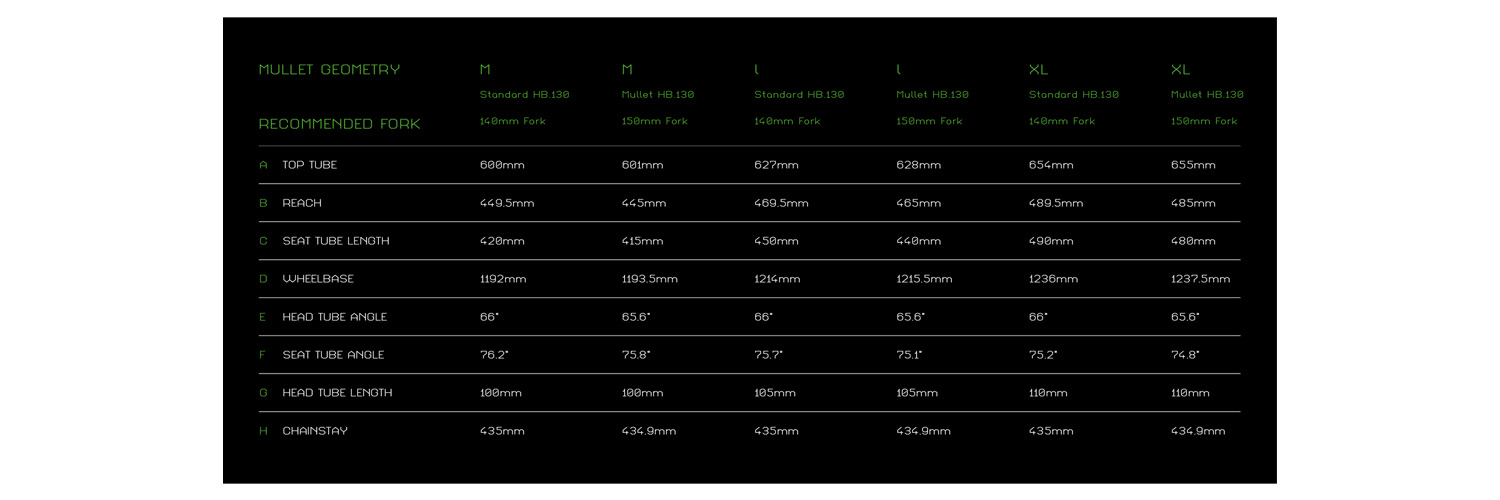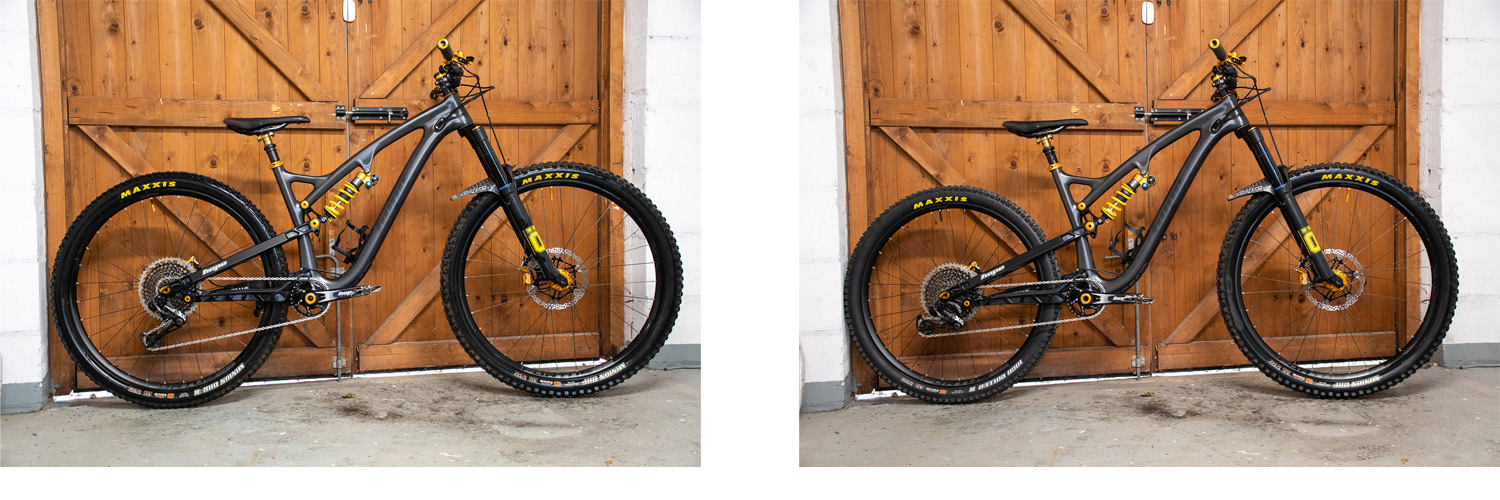Hope have recently released some updates to the HB130, the new HB130 FR, and an optional mullet kit. I’ve been fortunate enough to try out the new mullet kit on my HB130, which I’ve had for about 6 months now.
What are mullet bikes? They are bikes with mixed wheel sizes, 29” up front and 27.5” in the rear. There’s nothing new about this, motocross and enduro motos have been running mixed wheel sizes forever, a few mountain bike manufacturers have dabbled with it too, but that didn’t really catch on at the time. Oh and what about penny farthings? There’s been a bit of a shift in the industry to mullet bikes in the World Cup Downhill scene over the past couple of seasons, and it’s started to make its way onto some enduro bikes too.
So what’s the point? Well, you keep the big wheel benefits up front- better roll over, increased grip and better rolling speed, but you’re said to gain sharper more agile handling at the back paired with a wheel which is easier to get up to speed and as a side bonus for shorter riders, a little extra bum clearance when you’re hanging off the back. It won’t do you any favours going up, this is all about speed and having a bit more fun downhill.
.jpg)
In Hope’s mullet kit you get a Hope Fortus 26 wheel in 27.5” flavour, a Maxxis High Roller 2, rim rim tape and tubeless valve, and of course, the crucial mullet link. You can’t just throw a smaller wheel into the bike and call it good, it’s going to mess with your geometry- dropping your bottom bracket height and slackening the head angle. The link in the kit will maintain your HB130s original ‘low’ setting geometry. It’s worth noting that the mullet link does not offer the flip chip found on the standard bike- one setting, low and fun.

Fitting the link is a simple and quick process, a schematic is provided, the whole thing takes less than 10minutes- it takes longer to set up your new wheel. Switching between the two for a bike park day or a huge epic wouldn’t be a hardship, you can switch the link in no time and if you’ve got the other wheel type set up and ready to go you’ll be in business in a flash- two bikes in one.
.jpg)

So down to the important stuff, how does it feel?
These initial impressions are coming from somebody with a decent amount of time on the standard bike, I’m no elite level racer or KOM chaser, but I’ve been riding a long time and I’d like to think I’m decent on a bike- the bike’s geometry remains the same between each set up, so we’re looking for subtleties in the way it feels rather than huge differences.
In an attempt to be somewhat scientific about it, I loaded up the car with both wheels and links and went to some familiar trails in the Forest of Dean. I ran back to back laps of the same trail, alternating set ups, with no changes other than the link and rear wheel.
For the first run I ran the mullet link and set off on the climb, I was feeling really strong, til I realised I’d played a trick on myself, the smaller rear wheel reduces the final drive ratio so I was pushing an easier gear than I thought! I wanted to run a mix of tech and flowy trails to see what suited the different set ups. In techy sections of trail, I found the bike was slower than the 29er, due to the rear wheel dropping into holes more and not rolling over obstacles so well, this was confirmed when I ran the same section on the 29er - it felt like it got over rough ground more quickly and smoothly. So I reckon if you’re racing your HB130 and you want the quickest possible bike, stick with the 29er, it’s almost like Hope knew what they were doing when they designed it.
Where the mixed wheel set up shone was in smoother flowing sections of trail, it amplifies the playful character of the 29er, it’s more agile for pushing into berms, and I felt like I could have more fun in the air too. I wouldn’t hesitate to switch to the mullet for a bike park day, it adds another feather to the HB130’s bow and gives an already very capable bike another personality.
Find out more about Paul on his Ambassador Page or follow him on Instagram